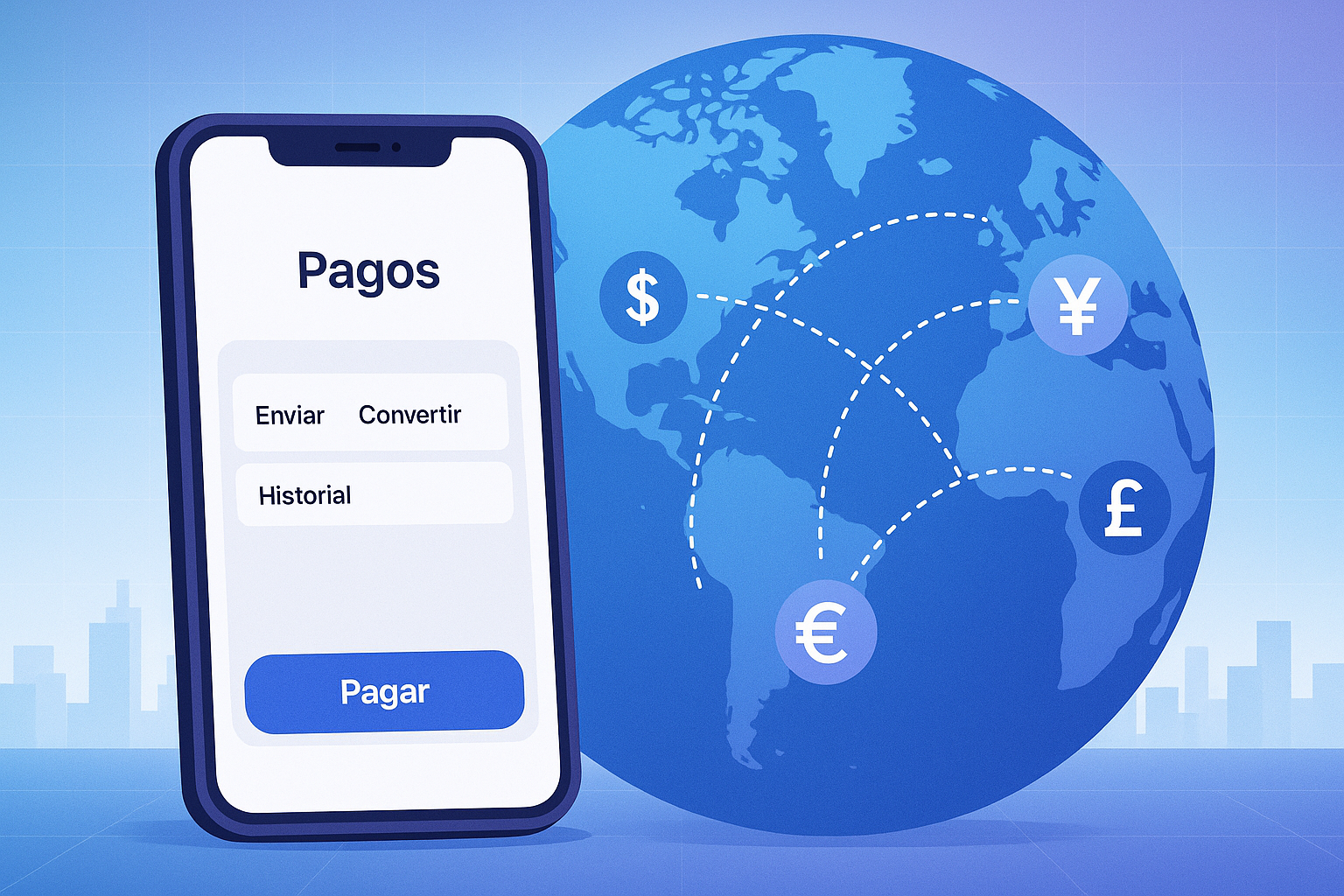Share this article
No items found.
No items found.

The definitive guide to expanding your business in LATAM.
A FREE 5-day email course that teaches you how to optimize your payment rates and simplify your operations.
Obtain the guide

In an increasingly globalized business environment, international payments are no longer an exception but an everyday necessity. Companies operating in multiple countries, whether with distributed teams, global customers or foreign currency revenues, need to process cross-border payments with speed, security and predictability.
However, moving funds between countries means facing frictions: from the exchange rate to the compatibility between local payment methods, as well as the regulations of each market.
For companies with high transactional volume or subscription models, these challenges not only affect user experience, but also margins and business scalability.
This article explains what international payments are, how they work and what alternatives exist for companies operating or looking to expand in Latin America.
international payments, also called cross-border payments, are transfers of money between parties in different countries. This exchange is key to international trade and ranges from the purchase of goods and services to the payment of remote jobs and investments.
These payments require operating through regulated financial institutions and handling currency conversion. In addition, they often involve intermediary banks, financial institutions in both countries and various payment platforms to ensure compliance with regulations for these international transfers.
In essence, international and domestic payments serve the same function: the transfer of funds from a sender to a receiver. However, there are important differences due to the complexity involved in operating between different countries. The main differences between the two types of payments are highlighted below:
That's why having a specialized payment infrastructure such as Rebill can make all the difference. By operating in several Latin American countries and offering multi-currency conversion with transparent exchange rates, you can simplify the management of international payments, reduce operational costs and ensure regulatory compliance from a single platform.
In Latin America, choosing the right method for making and receiving international payments is a strategic decision, especially for companies with business models based on recurring payments, subscriptions or regional expansion. Depending on the volume of transactions, the frequency and the currency in which you want to collect, some solutions offer clear advantages over others.
Payment gateways such as Rebill, dLocal, EBANX, PayPal and PayU are widely used in Latin America for their ability to process payments in multiple currencies and accept local methods, facilitating e-commerce and recurring payments.
They are one of the most frequent methods for international payments due to their acceptance in foreign trade and their speed. Cards allow immediate payments, although they usually generate additional costs for currency conversion and bank account fees.
Although their international use is still limited, these systems offer almost instantaneous and lower-cost transfers. In addition, they are growing in regions with advanced infrastructure.
Mainly used in B2B transactions, these transfers are made through networks such as SWIFT. They are secure, but can be slow and costly due to the involvement of intermediary banks.
Although their use is still limited, cryptocurrencies allow fast transfers without intermediaries, with low costs. However, their volatility and variable regulations hinder their mass adoption in international transactions.
Considered one of the safest methods for international payments, especially in trade of goods, as they guarantee payment to the exporter only if certain documentary conditions are met. They involve the intermediation of issuing and confirming banks, minimizing risks for both parties.
These are bank instructions to transfer funds from the payer to the payee, used in international transactions to secure the transfer of money. Although less common than letters of credit, they offer a formal and secure way for specific payments.
Additionally, for international payroll payments, platforms such as Deel, Ontop, Payoneer and Wise stand out for their speed and tax compliance, adapting to the management of remote employees.
These solutions overcome limitations of traditional methods such as Mercado Pago (no international support) and PayPal (high costs and limited support), responding better to the needs of the Latin American market.
Choosing the right supplier is essential for your international operations to be safe, efficient and profitable. To make the best decision, it is key to follow a series of practices that minimize risks and optimize costs:
If you are looking for a reliable and efficient solution to manage your international payments, Rebill is the ideal option in Latin America. Its infrastructure is designed for companies that want to scale to the region, allowing them to centralize collections in dollars, receive payments in local currencies and access the most widely used local payment methods, without the need to create entities in each country.
It stands out from other alternatives due to its transparent rates, personalized support and integration in less than 1 hour.
Contact us and find out how to access the most convenient platform to process your international payments and boost your business.

.avif)